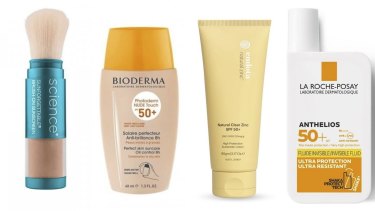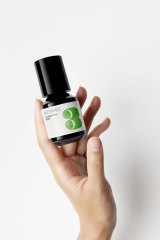Sunscreen 101 The best products to use and how to apply them
Most people know that Australia is one of the skin cancer capitals of the world, with one of the highest rates of the disease globally.
And yet countless patients walk into Dr Shyamalar Gunatheesan’s dermatology practice every day completely bemused as to how and when to apply sunscreen.
![“The morning one [sunscreen application] is your sort of ‘Protect you just in case’, but it’s not sufficient [for the whole day],†says skin cancer researcher Rachel Neale.](https://static.ffx.io/images/$zoom_0.189%2C$multiply_0.4431%2C$ratio_1.5%2C$width_756%2C$x_0%2C$y_315/t_crop_custom/q_86%2Cf_auto/7f9efa459c47915123a14a5f661a2ed3b8f04037)
“The morning one [sunscreen application] is your sort of ‘Protect you just in case’, but it’s not sufficient [for the whole day],†says skin cancer researcher Rachel Neale.Credit:istock
“People are just doing a lot to their face,†says Dr Gunatheesan, founder of Melbourne’s ODE Dermatology, referring to the multiple skincare steps â€" including various serums and moisturisers â€" that many people now regularly apply. “So people go, ‘Uh, maybe I need to put my sunscreen under my vitamin B and C.’ So it’s the numerous steps that I think are confusing people.â€
Now that we’re heading into summer when UVA and UVB rays â€" the ones largely responsible for, respectively, skin ageing and skin cancer â€" are at their peak, what should we be doing to keep ourselves protected?
As a matter of course, people need to be applying sunscreen first thing in the morning on any day that is forecast to reach a UV level of three or above at some point, says Rachel Neale, a skin cancer researcher at the QIMR Berghofer Medical Research Institute in Brisbane. (This information can be found at the Australian Government’s Bureau of Meterology’s website and on the Cancer Council’s SunSmart app.)
And Neale says that unless you’re going to be inside a building with very few windows all day and will only be out for a few minutes here and there, you should reapply your sunscreen â€" she recommends a minimum of SPF30 â€" every two to three hours.

Sunscreens by Colorscience, Bioderma, Endota and La Roche-Posay come recommended by Dr Shyamalar Gunatheesan.
“The morning one [sunscreen application] is your sort of ‘Protect you just in case’, but it’s not sufficient,“she says. “That’s an important thing to remember.â€
Another? Studies show that people generally put on less than half the sunscreen that is necessary to get the full SPF level listed on their tube and miss spots when they apply, says Neale. This is why she recommends that people apply sunscreen twice to areas of the body that are regularly exposed and where most skin cancers occur â€" hands, forearms and face â€" making sure to let one coat dry before putting on the second.
But which sunscreen to use? And when exactly in your morning skincare routine should you apply it?
Sunscreen should be the last layer of skincare a person applies, says Gunatheesan â€" so after serums and moisturiser, but before any make-up.
Top sunscreens according to needFor rosacea and other sensitive skin conditions: endota Natural Zinc SPF50+ (RRP $30)
For all skin tones: Rationale #3 Tinted Serum SPF50+ (RRP $172)
For acne-prone skin: La Roche-Posay Anthelios Invisible Fluid Facial Sunscreen SPF50+ (RRP $31.95)
For reapplication over make-up: Colorscience Sunforgettable Brush-On Shield SPF50 (RRP $99)
Budget pick: Bioderma Photoderm Nude Touch SPF50+ ($26)
Source: Dr Shyamalar Gunatheesan
For people with sensitive skin conditions of any kind (common ones include rosacea, psoriasis, eczema or any other impaired skin barrier) Gunatheesan recommends physical sunscreens over chemical sunscreens.
“More and more research is showing that zinc is probably the safest sun protecting agent for UVA and UVB [rays],†she says, noting one of the most popular physical sunscreen ingredients. “Because it’s soothing. You think about it, you use it in nappy balm for your kids’ dermatitis. It’s anti-inflammatory.†And many new zinc formulations like Rationale’s #3 Tinted Serum also avoid leaving a dreaded white cast on skin, she adds, making them particularly suitable for people with darker skin tones.

Rationale’s #3 Tinted Serum SPF50+
The other key physical sunscreen ingredient to look out for is titanium dioxide. Both that and zinc work by reflecting the sun’s rays immediately after application.
Chemical sunscreens, which contain ingredients like avobenzone, octocrylene and benzophenone, absorb UVA and UVB rays and cause a chemical reaction in a person’s skin to break them down. These sunscreens take 20 minutes, after application, to be effective.
For many people, chemical sunscreens, which are just as effective as physical sunscreens, don’t cause any adverse reaction. “But this [chemical reaction] releases heat, [which] can be worse for sensitive skin or rosacea patients,†Gunatheesan says.
People using any sunscreen, she adds, should still check the ingredients in their tube and undergo a patch test for three consecutive days on their forearm to see how they react, because formulas can feature nut oils or other ingredients that frequently cause skin sensitivity.
But most importantly, people need to find a sunscreen that they enjoy the feel of on their skin, Gunatheesan says. “If it’s going to prevent skin cancer, the best sunscreen is the one that you’re going to use.â€
Make the most of your health, relationships, fitness and nutrition with our Live Well newsletter. Get it in your inbox every Monday.

0 Response to "Sunscreen 101 The best products to use and how to apply them"
Post a Comment